
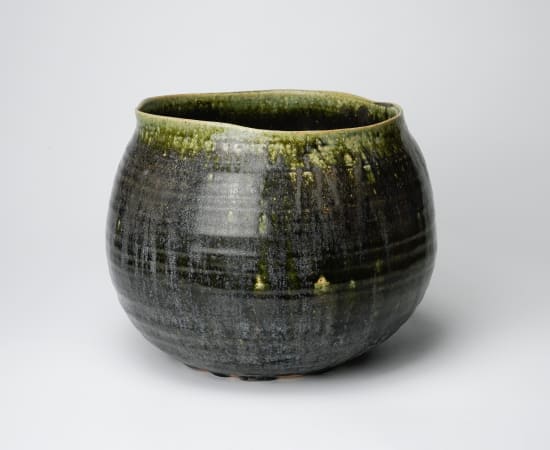
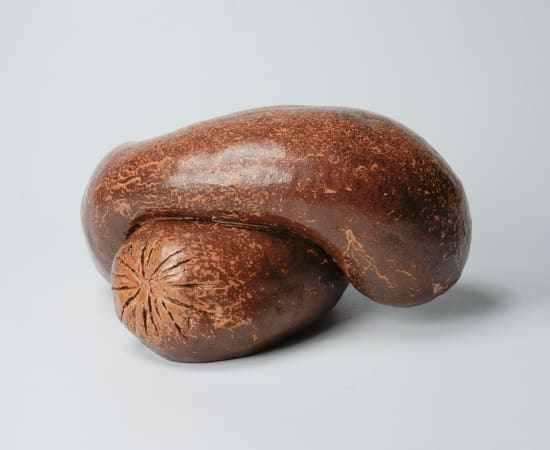

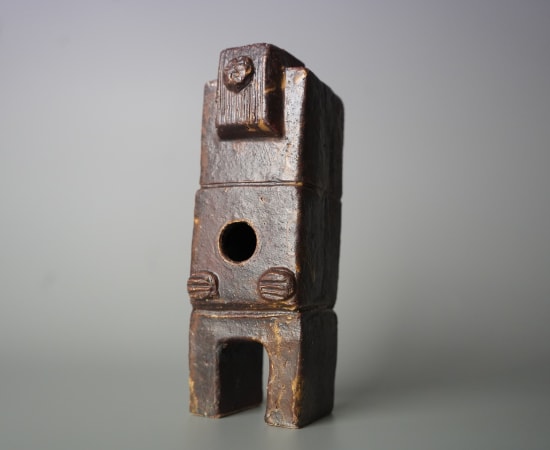


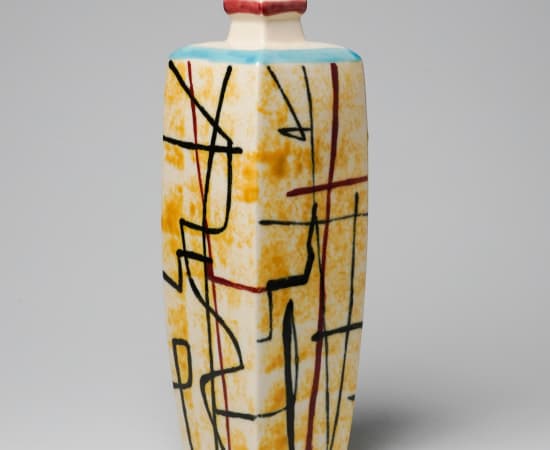


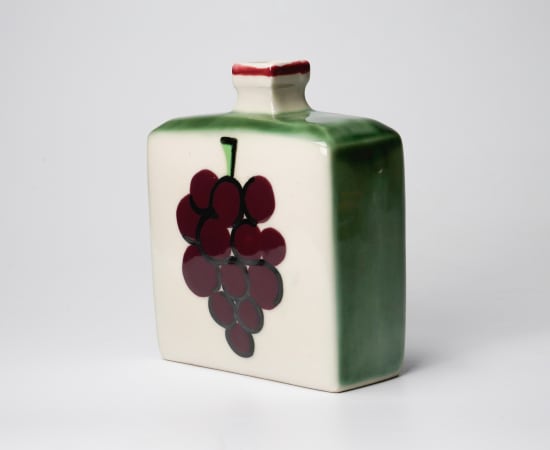

- Oribe Glazed Vessel 2 織部釉花生, 1970's
- Oribe Glazed Vessel 1 織部釉花生, 1970's
- Irabo Glazed Flower Vessel, 1970's
- Green Flower Vessel 緑の花器, 1970's
- Irabo Glazed Clay Statue 伊羅保釉 泥像, 1960s
- Black Glazed Jar 黒釉壺, 1970's
- Statue 像, Late 1960's
- Rectangular Flower Vase with Geometric Design 幾何文様角花生, Late 1950
- Oribe Hen Shaped Mug 織部 鳥, 1960's
- Blue And White Glaze Over White Slip , Big Plate With Abstract Bird 青白釉 白化粧 鳥文大皿, circa 1950's
- Jar with Grape Drawing 彩釉葡壺, 1940's
- Jar with Namako Glaze なまこ釉 壺, late 1970's
H13.9 x Dia22.8 cm
- X
- Tumblr
Alongside Yagi Kazuo, the artist and potter Kumakura Junkichi was a pioneer of sculptural and avant-garde ceramics that distinguished itself as a formal category in the Japanese ceramic industry during the mid 20th century. His interest in sculptural, figurative and organic forms bleeds into his functional wares, which take on geometric and abstract shapes.
Having been a central figure of the Sodeisha “Crawling through Mud” association. Core to his clay practice were the aesthetic tenets of Sodeisha that sought to elevate the status of the nonfunctional clay object. The beginnings of this philosophical exploration manifested in his use of 2 dimensional geometric compositions on the flat surfaces of his functional wears. During this time in the 1940s early on in his career, he used molds, a practice learned from Hamada Shoji and the folk craft movement. Later on, we can see his work took on a much bolder sculptural intent.